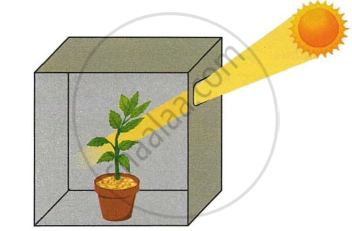Advertisements
Advertisements
प्रश्न
Which of the following plant part exhibits negative phototropism?
(a) root
(b) branch
(c) leaves
(d) stem
उत्तर
(a) Root
Roots bend away from the light source and show negative phototropism.
APPEARS IN
संबंधित प्रश्न
Give the scientific terms used to represent the Growth of a pollen tube towards ovule.
What happens to the moonflower
- during the daytime, and
- at night?
What is this phenomenon known as?
The movement of sunflower in accordance with the path of the sun is due to :
(a) photonasty
(b) phototropism
(c) hydrotropism
(d) chemotropism
Dandelion flowers open the petals in bright light during the daytime but close the petals in dark at night. This response of dandelion flowers to light is called:
P, Q, R and S are four major types of phytohormones. P is a phytohormone which functions mainly as a growth inhibitor. It promotes the wilting and falling of leaves. Q, R and S are phytohormones which all promote growth of plants in various ways. Q is responsible for the phenomenon of phototropism in plants. R is involved mainly in shoot extensions. The phytohormone S helps in breaking the dormancy of seeds and buds. What are P, Q, R and S? Give one reason each for your choice.
Differentiate between:
Thigmotropism and geotropism
Analogy:
Towards a stimulus: ______:: Away from the stimulus: Negative tropism.
What is the other name for thigmonasty?
Some plants like pea plants have tendrils which help them to climb up other plants. Explain how is it done. Name the plant hormone responsible for this movement.
The figure given below depicts a kind of tropic movement in plants. Study the same and answer the following questions:

- What kind of a movement is shown in the figure? Define it.
- How does this movement differ from geotropism?
- Name the stimulus responsible for thigmotropism. Give one example of a plant showing thigmotropism.
- Name one stimulus which gives a positive response for the roots but a negative response for the shoot.
- Draw a neat and labelled diagram of the part of a plant showing leaf tendril. Name the plant.
